I believe the bowhunting community, in general, lacks understanding in the stabilizer department. While running a pro shop from 2002 to 2012, I observed three stabilizer-buying habits: some customers avoided them like the plague, while others simply grabbed either the cheapest or nicest looking stabilizer off the peg.
For those who avoided them, I’d politely suggest they try one, but most often, the customer would digress, reasoning that they’d used one in the past without a significant change in accuracy. Chances are good that if you just purchase a random stabilizer, your shooting won’t improve.
So why buy one at all? Well, because the correct stabilizer could be the missing component in your bow setup.
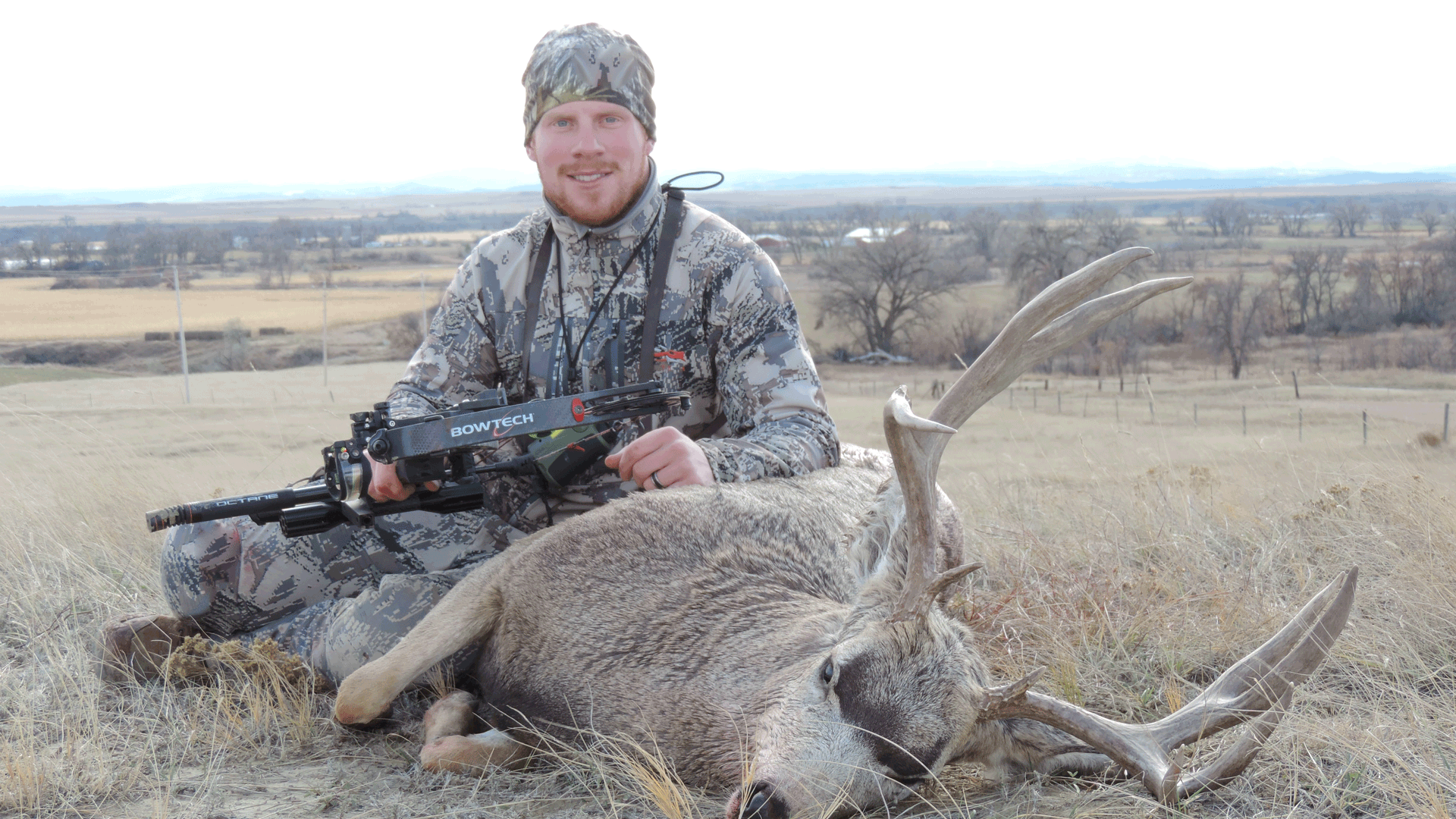
Author Darron McDougal arrowed this fine muley buck from a steep, declined shooting angle in a stiff crosswind as the buck was bedding on a shelf above a creek. A traditional, front-mounted stabilizer, combined with an offset stabilizer, helped McDougal make the difficult shot.
Stabilizer Basics
The earliest stabilizers were essentially metal rods with weighted tips – nothing more. While these helped to steady the shooter’s sight picture, they probably added vibrations to the bow rather than reduce them.
Over time, manufacturers realized that stabilizers could also serve as noise dampeners. Thus, in the late ‘90s, the market began offering gel- and rubber-filled stabilizers. Twenty years later, the market offers virtually every type of stabilizer one could ever imagine. So, choosing one – or more specifically, the right one – for your bow can be quite confounding. Don’t fret. In the following paragraphs, I’ll simplify the purpose of each style and how it lends toward a specific bow setup.
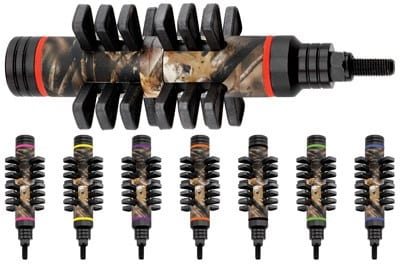
Pine Ridge Archery’s Nitro Stabilizer comes with Shock-Blades and a solid core design which destroys vibration and reduces noise for a smoother shot. Some archers prefer a lightweight stabilizer that helps balance the bow; others prefer an extra heavy stabilizer. The Nitro Stabilizer can be customized for all archers, thanks to a stackable weight system that allows the user to add weights to the stabilizer. The Nitro Stabilizer is available in two lengths, 5.5 and 7.5 inches.
The Breakdown
Let’s start with ultra-lightweight stabilizers that measure only a few inches. These really aren’t stabilizers, at least not as we once knew them. Many models are even made entirely out of rubber. They do little or nothing for stability. These are great for youth and women unable to handle heavy mass weight or 20-yard-and-in bowhunters. If you’re looking to silence your bow, they’re great for that, but if stability is what you’re after, shop for a larger, heavier stabilizer.
Moving up the ladder, let’s look at a middle-length stabilizer of average dimensions, say 6 inches, 5 ounces. These types of stabilizers make an excellent upgrade from the noise-dampener stabilizers we just covered. If a youth or women archer has conditioned his/her muscles to their current bow rig’s mass weight, adding more weight will further improve their muscle memory. By adding a little more weight out front, they’ll most likely hold steadier, too. Stabilizers in the 5- to 8-inch range are perhaps the most common, and for the treestand bowhunter shooting 30 yards and under, these are likely the best choice.
Now, let’s get into the 10- and 12-inch stabilizers, which are considered long and heavy for bowhunting purposes. These vary vastly in weight and distribution, so it’s important to thoroughly review the market’s offerings rather than lump them into one big category. Some distribute weight evenly across the entire stabilizer, while others feature weights or even large, heavy discs the size of a dessert plate at the end. The latter aren’t for everyone, but in the West’s stiff winds, these are far more immoveable than the other stabilizers we’ve covered so far, which can be a huge asset. The downside is that if you’re not accustomed to the extra weight, you could develop a tendency to drop your bow arm just before the shot fires, causing you to miss low. But, if you shoot all summer long with it, you’ll adjust to the weight. A longer stabilizer with even weight distribution – no weighted end – can be a good fit on some bows, but I usually find the weighted variety is better for stabilizing. Personally, I like models with a carbon bar finished with adjustable end weights, such as Fuse Archery’s Carbon Torch FX. The ability to customize always helps shooters achieve an ideal fit and feel. Other great models include: Pine Ridge, Bee Stinger, Doinker, Stokerized, and Ktech.
Now, let’s discuss sidebars and offset stabilizers. Their purpose is to counterbalance bow-mounted accessories – sight, rest, quiver, etc. Think about it: You shoot all summer long without your bow quiver – or at least most bowhunters do – and then you attach it before going bowhunting. Suddenly, you realize it throws your bow’s balance all out of whack. With an offset stabilizer, you can easily shoot all summer with your quiver on, which instills confidence for those bowhunting shot opportunities where removing your quiver isn’t possible.
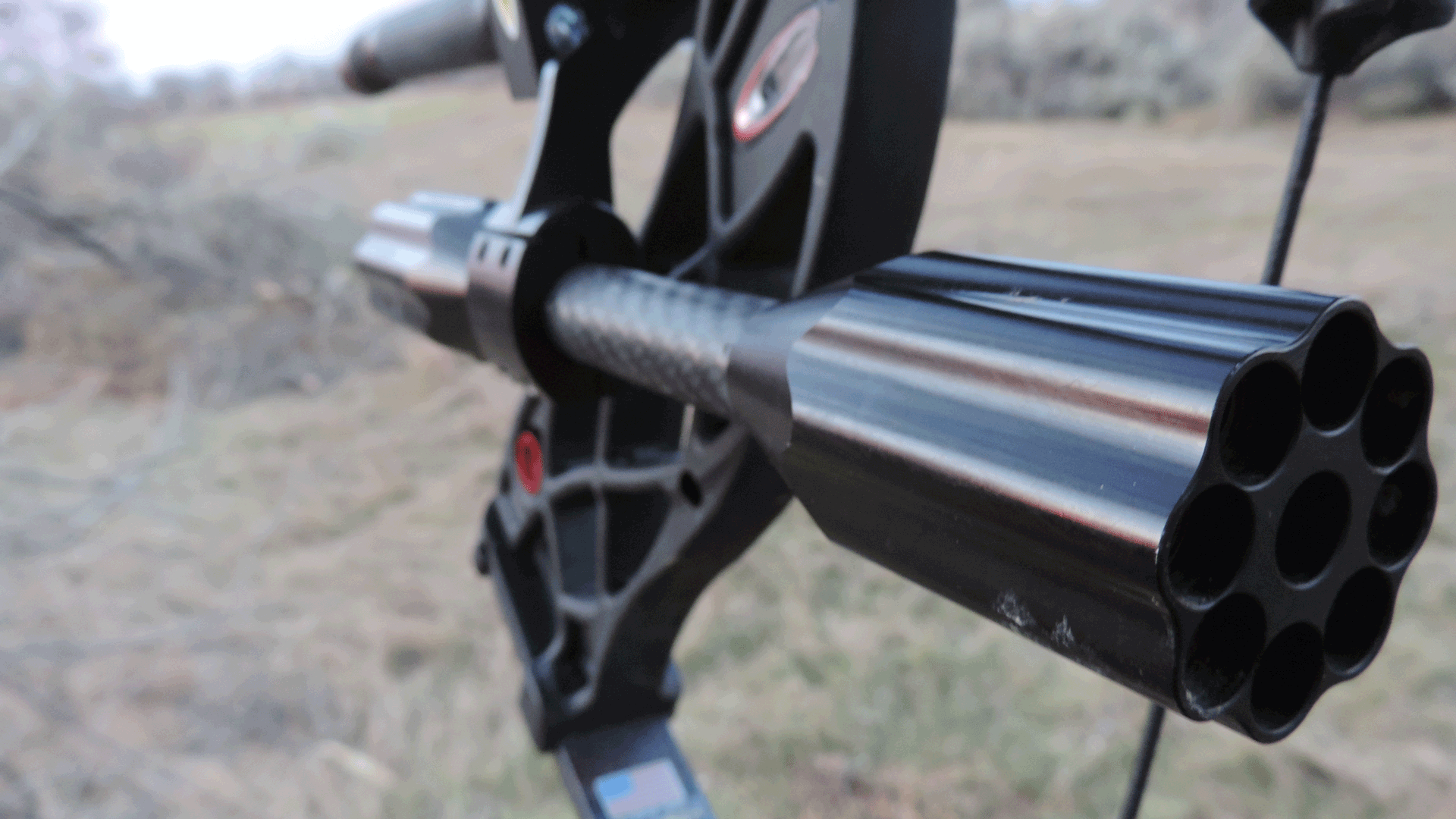
An offset stabilizer can supplement your traditional, front-mounted stabilizer, as shown here.
Some bows today come with an offset stabilizer-mounting hole. On these bows, a sidebar or offset stabilizer will overcorrect for bow-mounted accessories, so a straight-bar stabilizer like the ones we discussed earlier are better fits in most cases.
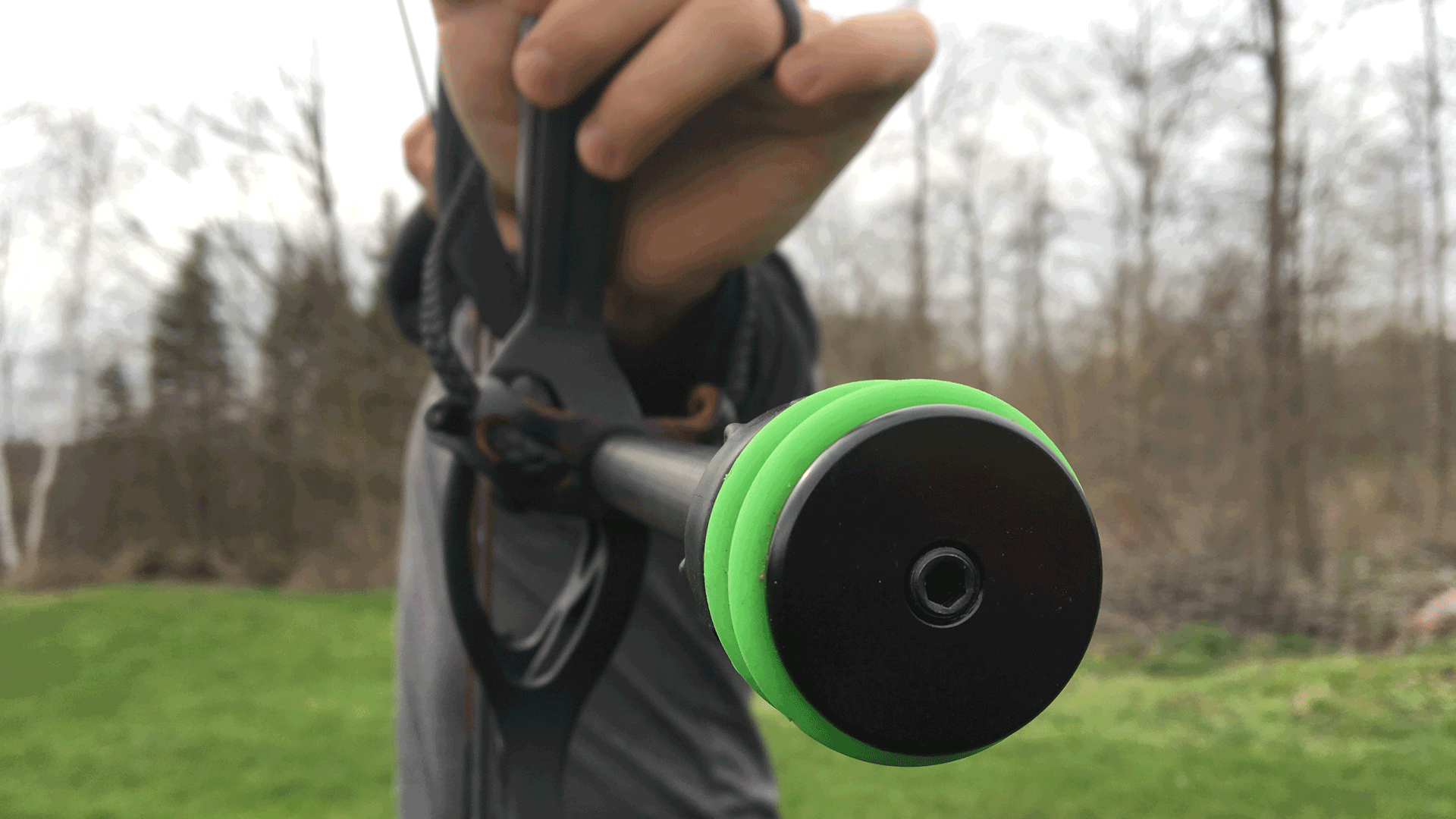
Some bows, like this Hoyt Pro Defiant, feature an offset stabilizer mount, which basically turns a conventional stabilizer into an offset stabilizer to counterbalance bow-mounted accessories.
Lastly, let’s discuss hybrid stabilizers. Trophy Taker (www.trophytaker.com), for example, makes a rather unique stabilizer/quiver combo aptly named the Quivalizer. It mounts as a quiver for accessing stands and negotiating tight areas, but quickly attaches to the front of the bow as a long stabilizer like those used in competitive archery. It’s frequently used by bowhunters out West who commonly shooter longer distances.
Other hybrid stabilizers include those that mount to different places on the bow than a conventional stabilizer. These can be beneficial as supplements to your traditional, screw-in stabilizer. But, don’t just add them to “bling out” your bow; instead, evaluate if your rig is balancing awkwardly, then consider where and how much weight must be mounted to solve the issue.
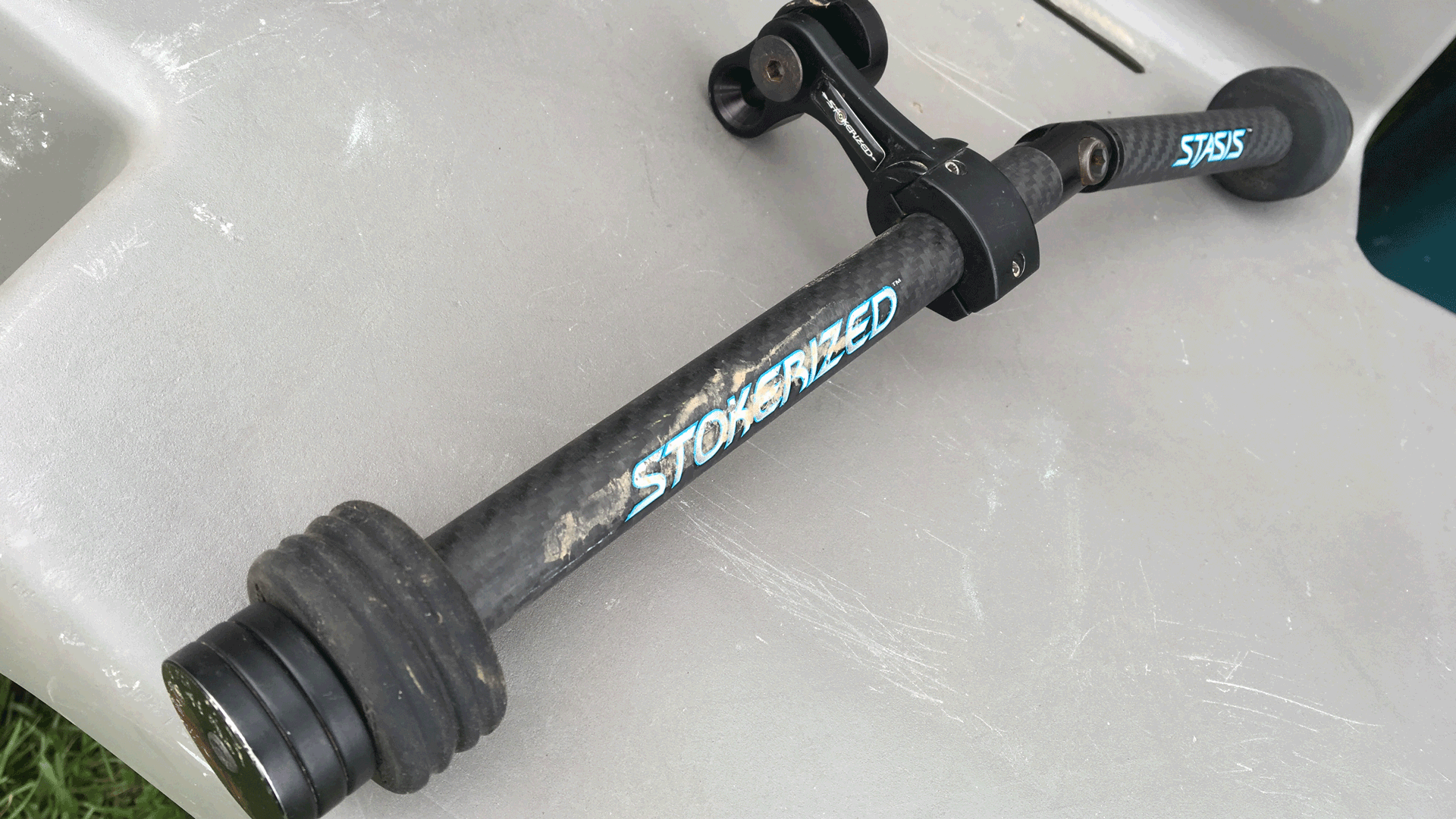
Adjustability can help you achieve the perfect balance and feel with your individual bow setup. An offset stabilizer like this Stokerized Stasis counterbalances bow-mounted accessories, but also adjusts for the desired front-to-back balance and degree of offset.
Get the Results You Want
I wish there was a one-size-fits-all plan for choosing a bow stabilizer, but unfortunately there is not. But, understanding each style of stabilizer, and its purpose, will aid you in the hunt for the perfect stabilizer.
Once you understand the different styles of stabilizers and their purposes, head to a reputable archery pro shop and ask to test out several stabilizers on your bow in their range. When you find the right one, you’ll know it. It will balance your bow better than any other, and it will just feel like it’s meant to be, unless you’ve never shot with a stabilizer before. In that case, it will take some getting used to, but in the end, when you choose a stabilizer that is designed to do what you want it to, you’ll shrink your groups and improve your confidence.

 By
By 



